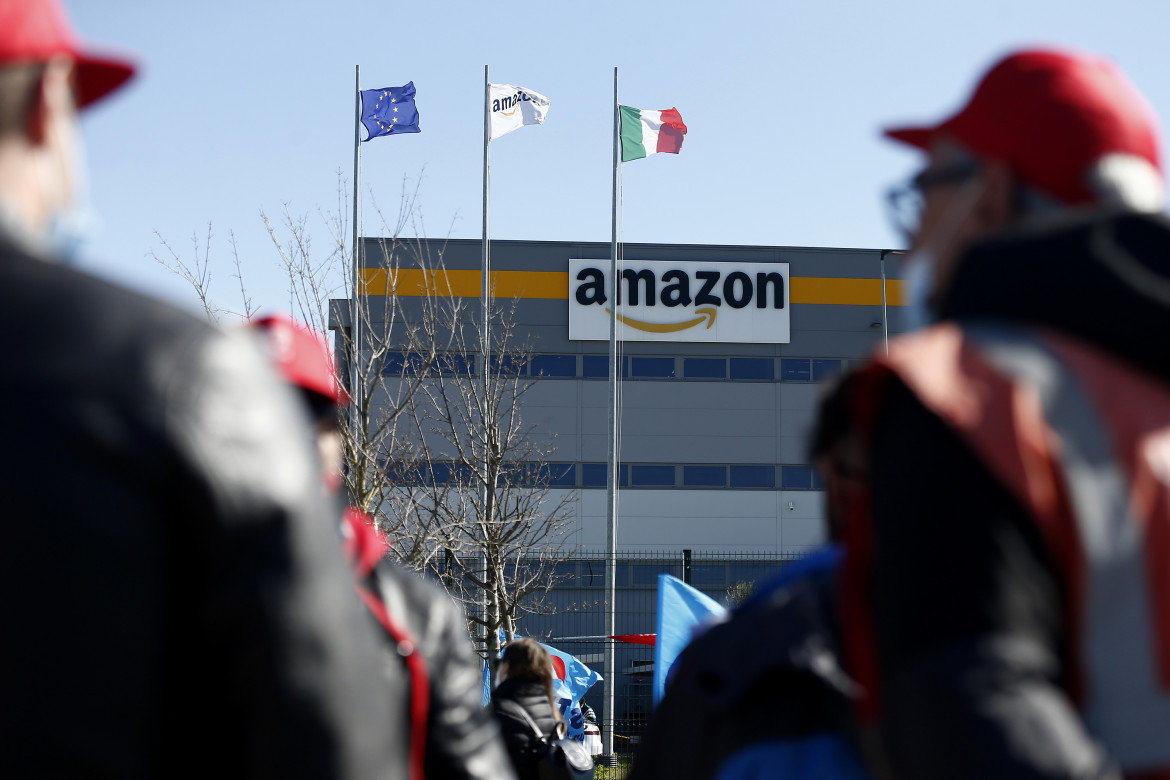Analysis
The Italian strike against Amazon became a model for the world
Italy is where the possibility emerged for building a different model of industrial relations than the one that Amazon is using in the rest of the world.

Two years have passed since the first national strike of the Amazon supply chain in Italy, and the effects of that day are similar to a prolonged earthquake, still being felt in Europe and even in the United States – an event that has become the object of careful study. It’s clear to everyone why: until that point, the e-commerce giant had always rejected any relationship with labor organizations, insisting on a system of direct relations between the company and individual employees – the Anglo-Saxon model, in short, which considers the defense of collective interests through unions unnecessary, and to be fought as much as possible.
Since its arrival in Italy in 2011, the Seattle-based company had set up its “own” model, the same it uses everywhere and based on employee loyalty. Employees were hired with the promise of salaries that would be competitive with the highest end of the logistics industry and with the possibility of acquiring professional skills that would pay dividends over time, in the e-commerce sector, one that is seeing extraordinary growth.
This conception clashed with the history of the Italian labor movement and, indeed, with the provisions of the Italian Constitution. But it was not easy for FILT CGIL to fight this model, which required them to do painstaking work as a street union, meeting employees outside the gates of large hubs and warehouses. They slowly got the message across to the workers that a union was not useless, as per the company creed, but quite the contrary: it was the only tool through which working conditions could be improved.
Their work had become increasingly hectic, with workloads skyrocketing due to the growing spread of e-commerce, particularly during and after the pandemic (but also before). In 2020, more than 18,000 Italian SMEs sold and distributed their products through the platform, and today Amazon is the leader with 80 percent of the Italian e-commerce logistics sector, with more than 43,000 workers, of whom 25,000 are employed in the warehouses, including direct and subcontracted employees, and another 18,000 delivery workers (direct and subcontracted) – the “drivers,” the couriers who show up at the doors of many thousands of customers every day. The subcontracted ones were among the first to unionize and denounce the increasing insecurity brought about by the algorithm, which required them to be faster and faster in their deliveries – exposing them to possible road accidents that they would be exclusively liable for.
The pandemic was the element that accelerated both the pace of work, which was already very strenuous to begin with, and FILT CGIL’s ability to catalyze the complaints and demands for union protection coming from an increasing number of Amazon workers. It went ahead through labor disputes at each particular location, with the first strike two years ago in the Padua warehouse in Vigonza, followed by the one that managed to bring the entire supply chain to a halt a month later.
That was the historic strike on March 22, 2021, called by all confederal unions in the field, with rallies in front of Amazon hubs and warehouses along the peninsula and with very high participation, up to 100 percent at some workplaces.
The images of Amazon workers in rallies, with flash mobs blocking the movement of vans and the parcel sorting service, stopping thousands and thousands of deliveries, were spread all around the world, because it was the first time this had ever happened with Amazon. Thanks to the support of the ETF (European Transport Federation), there were protests in support throughout Europe, and the echoes of the strike reached as far as the United States.
The multinational company was forced to come to the negotiating table. And with the agreement reached on September 15, 2021, the unions had their place enshrined in the disputes to secure the regulatory and wage improvements demanded by the employees, on the basis of the national logistics and freight contract. This was followed by the mobilization of the 14,000 subcontracted workers in distribution, those in the “last mile,” which led to a second agreement that extended the economic and regulatory improvements to temporary and subcontracted workers. Greater protections were enshrined for couriers as well, starting with reduced working hours.
In short – as FILT CGIL sums it all up – Italy is where the possibility emerged for building a different model of industrial relations than the one that Amazon is using in the rest of the world. It’s no wonder that the Italian experience has become an object of serious study abroad.
Originally published at https://ilmanifesto.it/i-successi-su-amazon-studiati-nel-mondo on 2023-03-15
